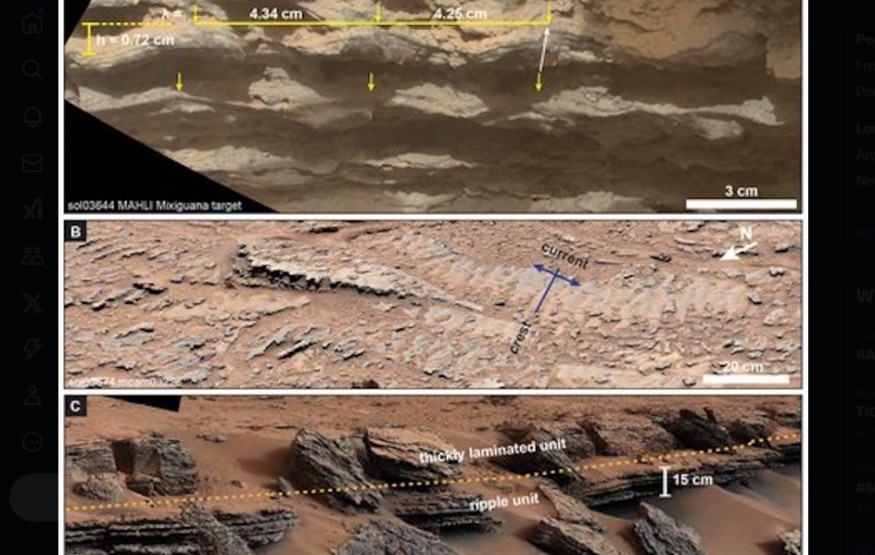
NASA's Curiosity rover has uncovered a major clue to Mars' distant past — ancient ripples in rocks that reveal evidence of liquid water on the planet billions of years ago.
These ripples, shaped by wind and water, suggest that Mars once had shallow lakes that were open to the atmosphere.
Ancient Mars Ripples Reveal Evidence of Liquid Water in Gale Crater
The ripples were found in Gale Crater, an area once known for wind-blown dunes. Scientists have long wondered if Mars ever had liquid water, and this discovery gives strong evidence that it did.
According to ScienceAlert, these ancient ripples date back approximately 3.7 billion years and point to a time when Mars had a warmer and thicker atmosphere capable of supporting liquid water.
Researcher Claire Mondro, the study's first author from Caltech, explained, "The shape of the ripples could only have been formed under water that was open to the atmosphere and acted upon by wind."
This finding offers strong evidence of ancient water bodies on Mars and adds to the growing body of knowledge about the planet's past climate.
Using computer models, scientists estimated that the lake associated with these ripples was shallow, likely no deeper than 2 meters. The ripples themselves are tiny — only 6 millimeters high — spaced just a few centimeters apart.
This suggests a body of water not very deep but wide enough to have been influenced by winds moving across its surface. This information offers clues about Mars' ancient environment and how water might have interacted with its atmosphere.
Caltech Experts Suggest Mars May Have Supported Microbial Life in Ancient Lakes
Dr. Michael Lamb, a geology professor at Caltech, noted that the discovery also extends the possibilities for microbial life on Mars, Earth.com reported.
By showing that liquid water may have been present for a significant amount of time, scientists now consider that Mars may have supported life during its warmer past.
These ripples were discovered by the Curiosity rover in 2022 during its mission in Gale Crater, an area once known for wind-blown dunes.
One of the key findings is that the water responsible for the ripples was not covered by ice, which suggests Mars had a far warmer atmosphere than it does now.
The study, published in Science Advances, also reveals that the ancient lakes on Mars were likely formed multiple times throughout the planet's history.
John Grotzinger, a geology professor at Caltech, highlighted that these findings are an important step forward in understanding Mars' paleoclimate.
© 2025 NatureWorldNews.com All rights reserved. Do not reproduce without permission.





